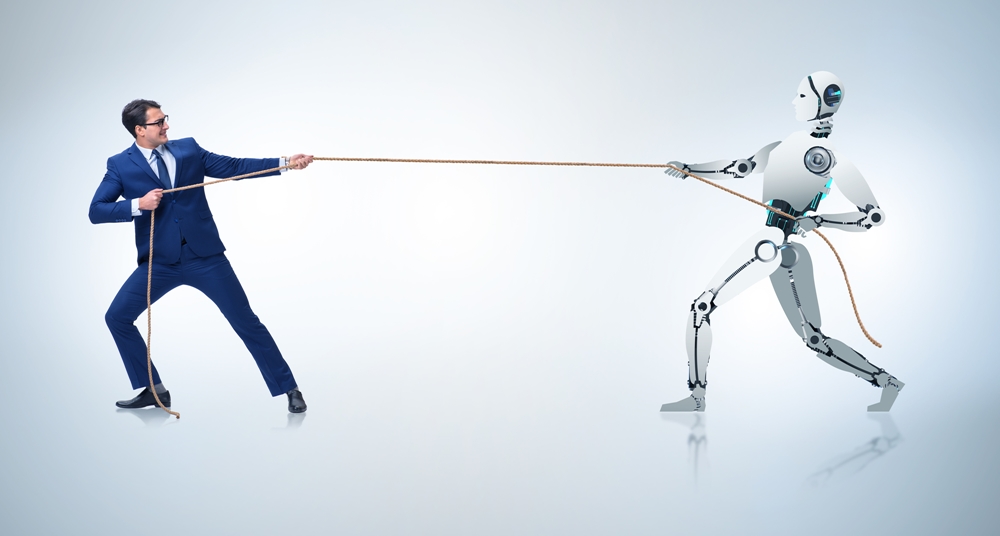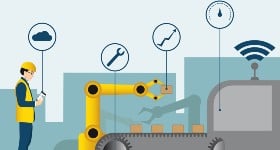
Many people are hesitant to embrace automation because they fear that it will lead to large-scale job losses. But at the same time, to reject advanced technology simply because we are not entirely sure of what its impact will be seems to me a waste of time, money, and effort. Instead of focusing on the negative effects that robots and automation will have, we should be thinking about how both businesses and societies can use machines to make people’s lives, and jobs, easier.
Instead of looking at robots through the lens of disruption, we should be thinking in terms of augmentation. How can we use this technology to augment the tasks we already perform? Alternatively, where can we apply automation so that it will best serve businesses, their employees, and their customers?
To start, let’s think first about the benefits that robots bring. In addition to allowing for increased productivity, automating certain tasks can also perform tasks with more efficiency and consistency, which leads to better dependability and predictability. Not only that, robots can be more physically capable than humans. Repetitive tasks that might cause physical strain or injury in people, such as lifting heavy boxes or assembling parts, can be done by robots with relative ease.
Car manufacturers in Japan, for example, already rely heavily on robots to carry out the bulk of the manufacturing work, and the streamlined design of their auto factories makes it simpler to ramp up or reduce production as needed. But they still employ millions of workers to carry out any number of tasks, including quality assurance and assembly. Nor are these employees merely muscle: Osamu Akahane, the general manager for one of Toyota’s manufacturing plants, says that they “want people who can think for themselves, not robots who do as they are told.”
Perhaps the reason some people are feeling increasingly anxious about the role of robots in our society is because they are becoming a common sight outside of factories. For instance, visitors to the Hirshhorn Museum and Sculpture Garden in Washington, D.C. are greeted by Pepper, a humanoid robot who can engage in basic conversation, share information about the latest exhibits, and throw down some dance moves. Yet Pepper doesn’t sell tickets, give tours, or stand guard over the artwork; in other words, Pepper hasn’t taken over anyone’s job. Instead, the people who might previously have had to perform Pepper’s current duties are free to spend more time focused on other, more rewarding endeavors, such as answering visitor questions or preparing for future exhibitions.
Ultimately, the fact of the matter is that robots can do some things better than humans can, and humans can do some things better than robots can. The trick to a successful partnership, one that is as minimally disruptive to the workforce as possible, is to figure out which tasks are ideally suited for each party. Humans (for now) are much more adept at performing tasks that involve any cognitive or creative skills, which makes them better suited for conceptual jobs. Robots, on the other hand, are very good at carrying out simple tasks as ordered, which is why they make good greeters and receptionists, among other things.
At Cheetah Mobile, we are currently in the process of replacing our human receptionists with our Cheetah GreetBots, which come equipped with facial recognition software, navigational skills, and the ability to answer basic queries from visitors. So now, instead of having someone be physically glued to their desk during their working hours and answer fairly routine questions all day long, that repetitive (and dare I say, boring) work can now be done by a robot, freeing up our human employees to work on more valuable tasks better suited to their talents. The idea is to transition people from low-level, routine jobs into new opportunities that will send them further up the career ladder.
When it comes to creating the ideal balance between human and machine labor, I think we need to start with the low-hanging fruit. What are the things that we don’t want to be doing, and that can be easily reproduced by AI and robotics? By answering that question, we can start to think about what it means to introduce robots into the workplace, as well as what safeguards need to be put in place to ensure that people don’t feel their jobs are being threatened. Ultimately, the goal is to move society forward - and we can’t do that if we’re afraid to embrace change.
Edited by
Ken Briodagh





